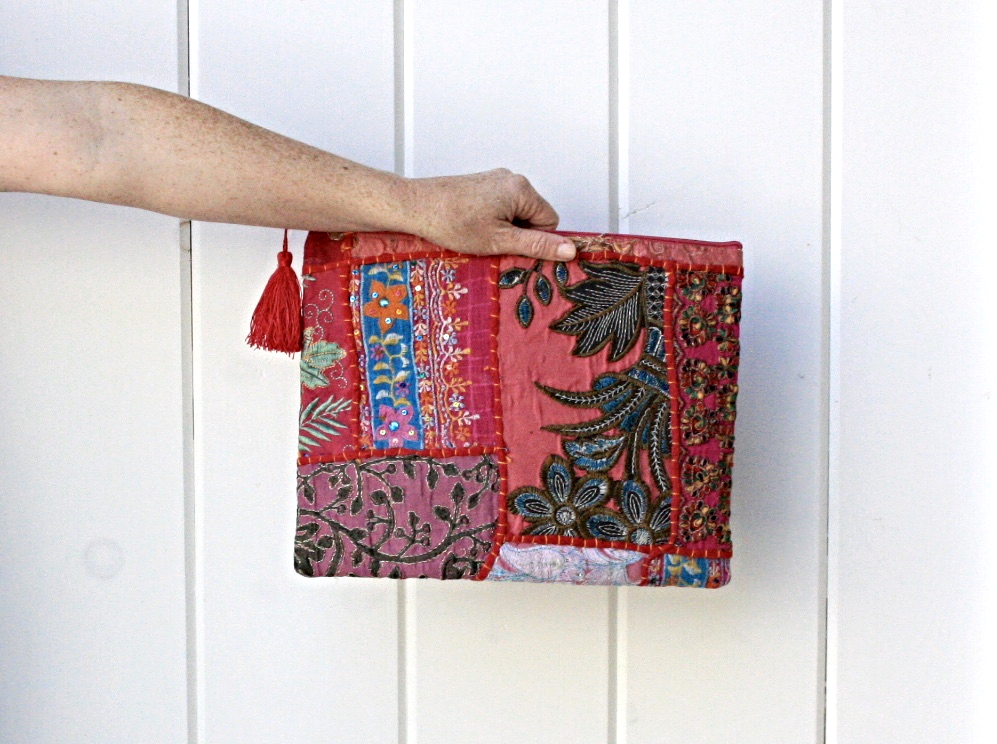About The Process: how repurposed saris bring hope and renewal to women in Bangladesh
Hailey Fynaardt
image via Basha.
Author's Note: I am so thrilled to finally add these beautiful quilts to the shop and tell their incredible stories, but finding a company whose vision, mission, and standards matched my own was harder than I anticipated. Like with- well, nearly everything you can buy- there are vast differences in terms of quality and style when it comes to Kantha Quilts. I began my search for the perfect kantha while in India, digging through shops and market stalls, but I was pretty disappointed with the low quality of materials and manufacturing methods.
Since it makes zero sense- seriously, zero- to sell, let alone own, something that isn't useful or beautiful (William Morris was on point), not to mention employ others to make it, I knew that I wouldn't settle for a less-than-stellar product. When I discovered Basha, I was such an instant fan of their designs and direction that I decided to take a leap of faith and I am so glad that I did. The patterns and fabrics are vibrant and clean and incredibly soft, like your-favorite-t-shirt-soft. Not only has each Basha quilt passed a super strict quality-control test, they have been made to age beautifully with {gentle} washing and wear. I hope you will treasure these unique works of art and the stories embedded in every colorful stitch and inch of fabric.
Enjoy the process!
Hailey
About the Process: { BASHA. } "a house of hope"
image via Basha
At Basha, women who were once oppressed by cultural, educational, and financial systems, earn their freedom and independence by using their hands to create beautiful and unique textiles that tell a story. Each quilt begins its life as colorful cotton sari fabric worn by women throughout Bangladesh that is transformed, one stitch at a time, into stunning symbols of hope and renewal.
During my trip to India last year (did you know I went to India? Have I mentioned that before?! ha.) I was struck by the beautiful sarees (sari/saree, try to keep up. sorry...whoops) that I saw women wearing everywhere we went. And I mean, everywhere. Women wear elaborate and delicate sarees while working in fields, riding on a scooter, walking around the markets, carrying children, and cooking. Personally, this seems like having to climb scaffolding in a floor-length bridesmaid dress, but I've only wore a sari for a total of 3 hours that two women wrapped, pinned, and tucked it around me while I tried to not fall over. But for most women, particularly those who are married, throughout Southern Asia, sarees are the most common and culturally embraced form of dress.
image via Basha
The average sari requires five to nine yards of fabric which not only makes them relatively heavy, but also expensive, so many women may only own one or two at a time. The most affordable options are often made from colorful block-printed cotton fabric that can withstand the elements and be mended as needed (notice the little patches on the blankets). Once the material is eventually discarded, it is often re-sold in markets. This is where Basha comes in...
image via Basha
After acquiring the fabric, the pieces are cut into salvageable panels to be layered and assembled with even rows of stitches, known as the "kantha" technique, to produce functional and beautiful home goods and accessories. Kantha quilts can take up to 40 hours to create, depending on the size and complexity, but the role of Basha has less to do with teaching technique as it does with providing women a safe place to work, a means to provide for their families, and perhaps most importantly, a way for them to cultivate community with other women.
As in many countries around the world, human trafficking and addiction is rampant and many women find themselves trapped in systems and marriages that are oppressive and abusive. Without access to work or support, most of these women do not have a safe way of freeing themselves or their children from the cycle. Basha not only provides their artisans with a safe work environment, stable income, and access to health care and education for their children- it also serves as a platform that empowers them to rebuild the lives they were previously deprived of.
How will a one-of-a-kind quilt be part of your story?



































